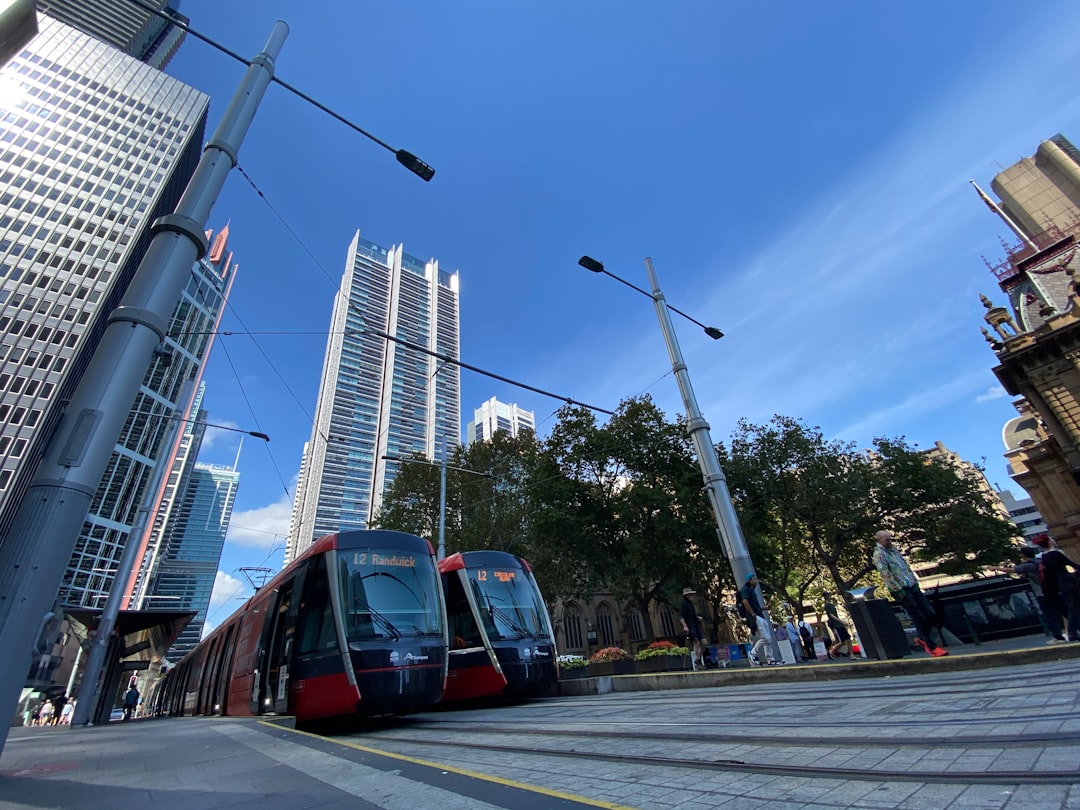Sustainable Urban Transport: Why It Matters
Sustainable urban transport is all about creating a transport system that lets people move around safely, affordably, and efficiently while being kind to our planet.
Here are the key points in a nutshell:
- Safe: Reduces accidents and injuries.
- Affordable: Accessible to everyone, regardless of income.
- Efficient: Gets you where you need to be without long delays.
- Eco-friendly: Low emissions and minimal environmental impact.
Currently, half of the world’s population lives in cities, and we’re expecting this to grow to nearly 70% by 2050. This massive urban growth puts a big strain on traditional transport systems, leading to more traffic jams, pollution, and longer commutes. Fortunately, many cities are turning to sustainable solutions to tackle these challenges.
From electric buses and trains to bike lanes and pedestrian zones, cities are finding innovative ways to offer eco-friendly transportation options. Not only do these solutions help reduce our carbon footprint, but they also improve our quality of life. Walking and cycling, for example, don’t just save the environment—they boost your health too!
Use this information to understand why sustainable urban transport is vital for our future.

Must-know sustainable urban transport terms:
What is Sustainable Urban Transport?
Key Components of Sustainable Urban Transport
Sustainable urban transport focuses on creating a system that is safe, eco-friendly, affordable, and efficient. Here are the key components:
Low-Emission Transport
Low-emission transport is crucial for reducing air pollution and combating climate change. This includes vehicles that produce fewer greenhouse gases, like electric buses and cars. For instance, electric buses can significantly cut down emissions compared to traditional diesel buses. This is essential because transportation is responsible for around a quarter of global CO2 emissions.
Energy-Efficient Modes
Energy-efficient modes of transport use less energy to move people and goods. Trains and trams are excellent examples. Electric trains, in particular, are highly efficient and can carry large numbers of passengers with minimal energy use. This efficiency helps reduce overall energy consumption and supports sustainable urban mobility.
Affordable Transport
Affordable transport ensures that everyone, regardless of income, can access reliable transportation. Public transportation systems like buses and trains are typically more affordable than owning a car. They also offer a more equitable solution, allowing people from all walks of life to travel comfortably and safely.
Public Transport
Public transport is a backbone of sustainable urban transport. It includes buses, trains, and trams that can move many people efficiently. For example, Bus Rapid Transit (BRT) systems are designed to provide fast and reliable bus services, reducing the need for private cars and cutting down on traffic congestion.
Electric Vehicles
Electric vehicles (EVs) are a key component of sustainable transport. They produce zero tailpipe emissions, helping to reduce air pollution. While EVs don’t solve congestion issues, they are a step towards a cleaner environment. Cities like Amsterdam are integrating electric bikes and scooters into their transport systems to offer more eco-friendly options.
Bikes
Bikes are one of the most sustainable forms of transport. They produce no emissions and promote physical activity. Cities like Paris are investing in bike lanes and bike-sharing programs to encourage more people to cycle. This not only reduces traffic but also improves public health.
Pedestrians
Pedestrian-friendly areas are essential for sustainable urban transport. Walking is the most eco-friendly mode of transport and requires no energy other than your own. Creating safe, walkable streets with good lighting and sidewalks encourages people to walk more, reducing the need for cars.
These components work together to create a sustainable urban transport system that benefits everyone. By investing in low-emission, energy-efficient, and affordable transport options, cities can reduce their carbon footprint and improve the quality of life for their residents.
The Four Pillars of Sustainable Urban Transport
Creating a sustainable urban transport system involves a multi-faceted approach. This section will explore the four pillars essential for achieving this goal: governance, financing, infrastructure, and neighborhoods.
Governance
Governance in sustainable urban transport is about developing effective policy frameworks and urban mobility plans.
Policy Frameworks
Policies set the groundwork for sustainable practices. For instance, the 2016 New Urban Agenda encourages urban-rural connectivity through sustainable transport. These policies aim to integrate various transportation modes, ensuring they work together seamlessly.
Urban Mobility Plans
Urban Mobility Plans (SUMPs) are strategic plans designed to meet the mobility needs of people and businesses. They focus on creating a better quality of life by addressing congestion, air pollution, and road safety. The European Commission strongly recommends SUMPs for towns and cities, emphasizing their role in improving residents’ lives.
Stakeholder Engagement
Effective governance also involves engaging stakeholders. This includes local governments, private sector partners, and residents. For example, the Future We Want document from the 2012 UN Conference underscores the importance of involving various stakeholders in developing sustainable transport systems.
Financing
Financing sustainable urban transport requires diverse funding sources and innovative investment models.
Funding Sources
Governments often rely on a mix of public funds, grants, and loans to finance sustainable transport projects. For example, the European Union supports cities through various funding programs aimed at developing sustainable transport infrastructure.
Investment Models
Public-Private Partnerships (PPPs) are a popular investment model. These partnerships leverage private sector investment to fund public transport projects. For instance, many cities have used PPPs to develop Bus Rapid Transit (BRT) systems, which are both cost-effective and efficient.
Infrastructure
Infrastructure is the backbone of sustainable urban transport, encompassing multimodal hubs, bike lanes, and pedestrian zones.
Multimodal Hubs
Multimodal hubs integrate various forms of transport, making it easier for people to switch between them. These hubs often include facilities for buses, trains, bikes, and even electric scooters. For example, the Trans-European Transport Network (TEN-T) proposal designates over 400 cities as urban nodes, requiring them to develop multimodal hubs.
Bike Lanes
Bike lanes are crucial for promoting cycling as a sustainable mode of transport. Cities like Paris and Amsterdam have invested heavily in bike lanes, making cycling a safe and attractive option for residents.
Pedestrian Zones
Creating pedestrian-friendly areas is another key aspect. These zones encourage walking, reduce traffic, and improve air quality. Copenhagen’s Strøget, the longest pedestrian shopping street in Europe, is a prime example of successful pedestrian zone implementation.
Neighborhoods
Neighborhoods play a vital role in sustainable urban transport through community planning and local initiatives.
Community Planning
Community planning involves designing neighborhoods that support sustainable transport. This includes creating mixed-use areas where people can live, work, and play without needing a car. The Atlas of Sustainable City Transport highlights how dense, well-planned neighborhoods can improve urban mobility.
Local Initiatives
Local initiatives are grassroots efforts to promote sustainable transport. These can range from community bike-sharing programs to car-free days. For example, many cities have implemented “Bike to Work” days to encourage cycling.
Resident Participation
Engaging residents in the planning process ensures that transport solutions meet their needs. Public consultations and surveys can provide valuable insights into what residents want and need from their transport systems.
By focusing on governance, financing, infrastructure, and neighborhoods, cities can build a sustainable urban transport system that benefits everyone. These pillars work together to create a cohesive, efficient, and eco-friendly transport network.
Examples of Sustainable Urban Transport
Public Transport Solutions
Electric buses are a game-changer for urban transport. They produce zero tailpipe emissions, making them a cleaner alternative to traditional diesel buses. Cities like Bogotá have acceptd electric buses, contributing to cleaner air and quieter streets. In 2019, global sales of electric trucks—including buses—hit a record with over 6,000 units sold. This shift is crucial for reducing urban air pollution and greenhouse gas emissions.
Trains and Trams
Trains and trams are staples of sustainable urban transport. They can move large numbers of people efficiently and with a lower carbon footprint compared to cars. Many cities in Europe have long relied on these systems. For example, Amsterdam has integrated trams into its public transport network, reducing the need for cars and easing congestion. Trains and trams are particularly effective in densely populated areas where space is at a premium.
Personal and Shared Mobility
Bikes
Cycling is not only eco-friendly but also promotes physical health. Cities like Copenhagen and Bogotá have invested heavily in bike lanes and bike-sharing programs. During the pandemic, Bogotá installed over 80 km of cycle paths, with 28 km becoming permanent. This quadrupled cycling on some main roads, showing how infrastructure can encourage more people to ride bikes.
E-Scooters
E-scooters offer a flexible and fun way to steer cities. They are especially useful for short trips and can be a great alternative to cars. Many cities have introduced e-scooter sharing programs to reduce traffic congestion and emissions. For example, Paris has acceptd e-scooters, integrating them into its broader sustainable transport strategy.
Car-Sharing
Car-sharing reduces the number of cars on the road, cutting down on traffic and emissions. It allows people to use a car when they need one without the costs and responsibilities of ownership. This is particularly effective in urban areas where parking is limited and expensive. Car-sharing programs are becoming more popular as cities look for ways to make transport more efficient and sustainable.
By focusing on these diverse modes of transport, cities can create a balanced and effective transport system. Each mode has its strengths and can complement the others, leading to a more sustainable urban environment.

By focusing on governance, financing, infrastructure, and neighborhoods, cities can build a sustainable urban transport system that benefits everyone. These pillars work together to create a cohesive, efficient, and eco-friendly transport network.
Benefits of Sustainable Urban Transport
Environmental Benefits
Lower Carbon Footprint
Sustainable urban transport significantly reduces carbon emissions. Public transport options like electric buses and trains produce far fewer emissions compared to traditional vehicles. For instance, Bogotá’s electric bus network has contributed to cleaner air by cutting down on harmful pollutants.
Reduced Air Pollution
Cleaner air is one of the most immediate benefits. During the pandemic, places like New Delhi saw dramatic drops in air pollution due to fewer cars on the roads. Air quality index (AQI) levels fell below 20, a stark contrast to the usual 200-500 levels.
Climate Change Mitigation
Reducing greenhouse gas emissions is crucial for fighting climate change. Transportation is one of the largest contributors to global CO2 emissions. By shifting to low-emission transport options, cities can make a significant impact. For example, shifting to mass transit could reduce carbon emissions by 0.73 GtCO2-e by 2050.
Economic Benefits
Fuel Savings
Switching to electric and more efficient vehicles can lead to substantial fuel savings. For example, a total investment of $4 trillion in public buses, trains, and railway tracks could yield $1 trillion in annual benefits by 2030. These savings come from reduced vehicle ownership, operating costs, and fuel consumption.
Job Creation
Investing in sustainable transport infrastructure creates jobs. Building and maintaining public transport systems, bike lanes, and pedestrian zones require a workforce, supporting nearly 12 million jobs by 2050.
Increased Property Values
Areas with good public transport and low traffic congestion often see higher property values. People are willing to pay more to live in neighborhoods with efficient and accessible transport options.
Social Benefits
Health Improvements
Sustainable transport options like cycling and walking promote physical activity, leading to better health. In Copenhagen, cyclists request 1.1 million fewer sick days than non-cyclists. This not only improves individual health but also reduces healthcare costs.
Accessibility
Sustainable urban transport makes cities more accessible to everyone, including those who cannot afford a car. Public transport, bike-sharing programs, and pedestrian zones ensure that everyone can get where they need to go.
Community Cohesion
By reducing car dependency, cities can foster a greater sense of community. Pedestrian zones and bike lanes encourage people to spend more time outside and interact with each other. This can reduce feelings of isolation and loneliness, improving overall quality of life.
Sustainable urban transport is not just about getting from point A to point B. It’s about creating a healthier, more equitable, and more enjoyable urban environment for everyone.
Sustainable Urban Mobility Plans (SUMPs)
Key Features of SUMPs
A Sustainable Urban Mobility Plan (SUMP) is a strategic plan aimed at improving the quality of life in cities by addressing transportation needs. It focuses on creating a balanced transport system that integrates various modes of transport—public transport, cycling, walking, and cars—into a cohesive network.
Integration
Integration is a key feature of SUMPs. They aim to bring together different transport modes and ensure they work seamlessly. This means coordinating buses, trains, bikes, and pedestrian pathways to provide a smooth and efficient travel experience for everyone.
Participation
Participation from local residents and stakeholders is crucial. A successful SUMP involves input from the community, local businesses, and government agencies. This collaborative approach ensures that the plan meets the needs of all users and gains broad support.
Evaluation
Evaluation and monitoring are essential for the success of a SUMP. Regular assessments help to measure progress and make necessary adjustments. By tracking performance against set goals, cities can ensure they are on the right path to achieving sustainable urban mobility.
Implementation and Monitoring
Urban Nodes
Urban nodes play a critical role in the trans-European transport network (TEN-T). The European Commission has designated over 400 cities as urban nodes, requiring them to adopt SUMPs. These nodes serve as hubs that link regional and national transport networks, ensuring smooth and efficient travel across Europe.
Urban Mobility Indicators
To monitor the effectiveness of SUMPs, cities must collect data on key urban mobility indicators. These indicators include metrics like traffic flow, air quality, and public transport usage. Regular data collection helps cities identify trends and make data-driven decisions.
Data Collection
Data collection is a cornerstone of effective SUMP implementation. Cities need to gather data on various aspects of urban mobility, such as the number of people using public transport, the volume of traffic on roads, and levels of air pollution. This data helps in evaluating the impact of the SUMP and making informed adjustments.
Feedback Mechanisms
Feedback mechanisms are vital for continuous improvement. Cities should establish channels for residents to provide feedback on the SUMP. This could include public consultations, surveys, and online platforms. By listening to the community, cities can make necessary changes and ensure the plan remains relevant and effective.
By focusing on strategic planning, integration, participation, and evaluation, SUMPs provide a comprehensive approach to developing sustainable urban transport systems. These plans not only address current transportation challenges but also pave the way for future innovations and improvements.
Frequently Asked Questions about Sustainable Urban Transport
What are the most sustainable transports?
Electric Cars
Electric cars are popular for reducing individual carbon footprints. They produce fewer emissions than traditional vehicles but still contribute to congestion and require significant infrastructure like roads and parking spaces.
Bikes
Bikes are extremely eco-friendly and promote physical activity. Cities like Bogotá have seen a surge in cycling, quadrupling bike use on some main roads by adding over 80km of cycle paths.
E-Scooters
E-scooters are an emerging sustainable transport option. They help reduce short car trips and are easily integrated into public transport systems, making them a flexible option for urban mobility.
Trains
Trains, especially electric ones, are one of the most sustainable forms of mass transit. They can move large numbers of people efficiently and with minimal environmental impact.
How does sustainable transport impact urban living?
Quality of Life
Sustainable transport improves quality of life by reducing traffic congestion, lowering pollution, and increasing green spaces. Curitiba in Brazil is a great example, with its extensive green spaces and innovative BRT networks.
Accessibility
Affordable and reliable public transport makes cities more accessible for everyone. For instance, Bogotá’s BRT network serves a vast number of commuters and makes travel more equitable.
Health Benefits
Sustainable transport options like biking and walking promote physical activity, which improves public health. Reducing air pollution through electric vehicles and public transport also leads to fewer respiratory problems.
What are the challenges in implementing sustainable urban transport?
Funding
Securing funding is a significant hurdle. Investment models and public-private partnerships are essential for developing sustainable transport infrastructure. For example, the EU Urban Mobility Framework proposes measures to help local authorities implement sustainable transport systems.
Policy Alignment
Aligning policies across different government levels is complex but crucial. A cohesive approach ensures that local, regional, and national policies support sustainable transport goals.
Public Acceptance
Gaining public acceptance for new transport modes and policies is often challenging. Awareness campaigns and community engagement are vital for gaining support and ensuring successful implementation.
By addressing these FAQs, we can better understand the multifaceted benefits and challenges of sustainable urban transport. This knowledge helps us appreciate the importance of investing in eco-friendly transportation solutions for a better future.
Conclusion
At Doot Scoot, we believe that sustainable urban transport is essential for creating livable, healthy, and vibrant cities. As we’ve explored, sustainable transport options like electric buses, bikes, e-scooters, and trains can significantly reduce emissions, improve public health, and improve the overall quality of life.
Doot Scoot’s Role in Promoting Sustainable Transport
Our mission at Doot Scoot is to be a leading authority in the eBike market, offering comprehensive reviews and expert guidance to help you make informed decisions. We focus on eco-friendly urban mobility solutions that are both efficient and sustainable. By promoting eBikes and other green transport options, we aim to play a part in the global shift towards sustainable living.
Future Growth and Innovation
Looking ahead, we are committed to staying ahead of trends in eBike technology and urban mobility. We plan to expand our offerings, possibly including branded merchandise and even our own line of eBikes. Our goal is to foster a community of eBike enthusiasts who share our passion for sustainable transport.
Join Us on the Journey
Sustainable urban transport is not just a trend; it’s a necessity for our planet’s future. By choosing eco-friendly transport options and supporting initiatives like ours, you’re contributing to a cleaner, healthier world.
Together, we can make a difference.
For more information on sustainable urban transport and our products, visit Doot Scoot.
Thank you for being part of the solution. Let’s ride into a greener future together!











